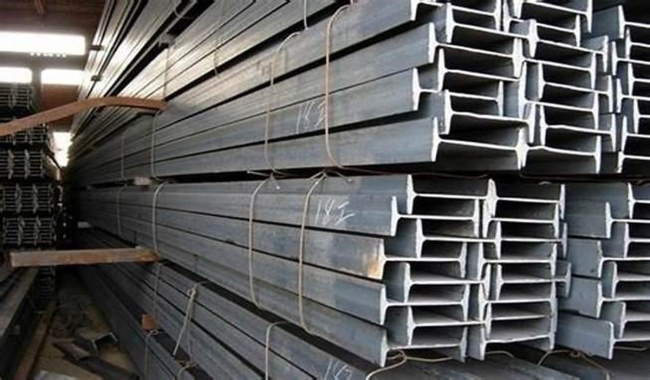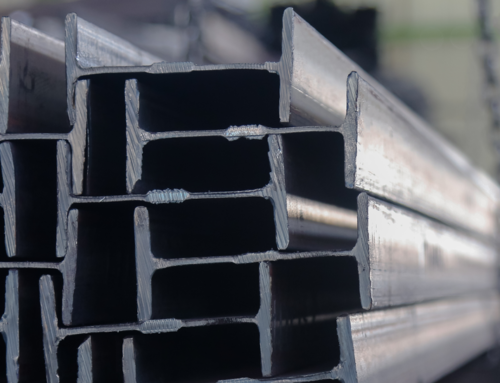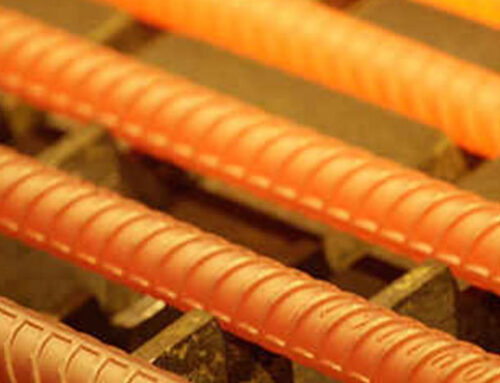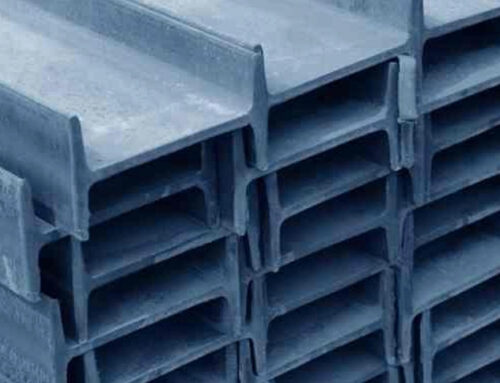A beam is a profile whose main function is to withstand stresses resulting from shear force and bending moment, and its main use is in the construction industry. Hot rolling is used in the production process of this product, and there are only some different stages in its normal and hash production.
This steel product, which is widely used in buildings, is divided into various groups based on the ratio of wings and widths. In this article, we intend to first briefly introduce this product and then examine its types.
As a widely used metal structure in the construction industry, beams are used in different types depending on the tasks and role they have, and their types include IPE, INP, IPB, and honeycomb beams.
Learn more about the types of beams
As you know, beams are a well-known profile with an I and H cross-section made of various steel alloys; this product is widely used in building construction; So that metal frame buildings would not exist without this profile.
The main function of this type of profile in structures is to bear and transfer the load on the building, and it is also used as the best option in the design of columns, trusses and beams. This profile consists of two parts: the wing and the web. The main and middle part of the beam is called the web and the edges and sides are called the wings. The high volume of use of this product has made the price of the beam one of the determining factors in the total price of the building.
Knowing the types of beams is essential for people who plan to build a building. Usually, we know the beam as the building column, because it maintains the shape and structure of the building and makes it as strong as possible. Beams are a category of steel profiles that are used to build all kinds of buildings, columns and beams, each of which has a great variety based on their characteristics, size and strength.
This product is known as the H-shaped beam, which is manufactured in alloy factories and has different sizes depending on its type. This product is produced in the form of a branch, the length of each branch is often 6 or 12 meters.
The surface of the beams The cross-section of these products consists of two parts, the horizontal part, and the wing, which is two vertical parts at an angle of 90 degrees, the shape of which will be determined based on the type of beam we use.
As mentioned, this product has a wide variety, for example: wide wing beam, T-shaped beam, ipe beam, galvanized beam, flat beam, construction beam and angle.

Complete introduction of types of beams based on features
As we mentioned in the above sections, beams are one of the steel sections used in construction, which is used in the construction industry due to its extraordinary properties such as high strength, flexibility, and resistance to pressure and tension. Next, we will examine the different types of beams according to the features of each:
Wide-wing beams
They are mostly used in construction projects, bridge and tunnel construction and are very resistant to bending. The design of this product is I-shaped, which has wider wings than other models of this product.
T-shaped beams
This product is often used for framing and can also withstand heavy weights. The wing tee of this product is very resistant to pressure and also has a more prominent separation in its price and is designed for pressures such as bending.
Ipe beam
This product has horizontal wings and a vertical part called the web, and the web is responsible for connecting the beam to the wings. These wings also prevent the product from bending, and the web is highly resistant to heavy pressure.
Galvanized beam
This product is a good option for construction projects due to its high resistance and is included in the category of types of beams. The word galvanized means a layered coating that is placed on the beam and prevents scratching and corrosion of the steel and makes it usable in humid areas.
Flat beam
These beams distribute the pressure of the walls well and prevent them from concentrating on one point. That is why it is used more in heavy projects.
Construction beam
This product is made of iron and is produced in rectangular and cylindrical shapes and is used in concrete structures. Its high strength also makes the structure strong.
Angle beam
This beam, also known as an angle, is mostly used in temporary structures as a frame column. Other types of angle beams include two models: equal wing and unequal wing.
Types of beams based on production standards
Basically, beams have different standards that make each one more distinctive from the other, and for this reason, the variety of production in these products is extremely high.
IPE beam
The great feature of this beam is the thickness of the same flanges at the top and bottom. The standard of this product is that it is used in Europe and even Iran and generally meets European standards. This beam is imported from Germany and Korea, etc. and is known as Chinese and Russian.
INP beam
In this beam, its flanges are initially thin and gradually thicken. It also has a gentle slope in the thick area of the flanges. The size of this product is 60 to 800 mm and has rounded edges.
IPB beam
IPB or H-beams are produced in the shape of the letter H. This product is designed so that the length of its flanges is greater than its web. On the body of this beam, there are two marks, V which means heavy beam and L which means light beam, the height of this product is about 100 to 1000 mm and it is included in the category of widely used types of beams.
CPE beam
Another name for this beam is honeycomb. This product has a low weight, which can help in carrying and moving it. This product also has less bending ability compared to its other types.
Belgian beam
The length of this product is between 6 and 20 meters and is made of a combination of steels such as: ST52, ST44, ST33 and ST37. Belgian beams have a minimum temperature that they can withstand of about 1100 degrees Celsius.
Types of beams based on size
Given the importance of beams in the construction industry, there is a high variety in terms of size and dimensions. This variety allows engineers and architects to use the best type of beam for their needs according to the project. Therefore, we will continue to examine the types of beams based on size:
Size 12 beam
The weight of this product is between 10.4 and 26.8 kg, which is often used to build columns, beams, and ceilings, which are produced according to the standard they have. This product follows the IPE standard. This product is considered to be in the category of the lightest beams available on the market.
Size 14 Beam
This beam is one of the most widely used beams compared to other beams. The weight of this product is approximately between 12.9 and 33.7 kg, and many factories in the country have started producing this product. The 14 beam is in the category of the heaviest beams, due to the high resistance of this product, which is used to make columns.
Size 16 Beam
The 16 beam weighs between 15.8 and 41.6 kg. This product is used to make horseshoes and beams. Also, this product is made of steel, which is resistant to cutting and bending. Like other products, this product is produced in the form of branches, the length of which can be 6.9 to 12 meters.
Size 18 Beam
This beam is another type of beam that follows IPE, INP and IPB standards. The web length of this product is about 18 cm and its wing length is 91 mm. The 18-inch beam is very resistant to tension and is therefore used more for heavy structures.
The 20-inch beam
This product has a great variety and is considered one of the most practical beams. This product weighs 22.4 to 60 kg per meter and is often used for large structures due to its weight and resistance, or in some cases for lower floors.
Types of beams based on abbreviations
Usually, types of beams are distinguished and recognized according to their size and type based on abbreviations. For this reason, we will continue to examine the types of beams in terms of their abbreviations.
European-type beam
European-type beam can be recognized by the abbreviation INP, which is considered one of the most normal beams available in the market. This product is also used to make columns and its length is about 8 to 16 meters and its width is 42, 50, 58 to 215 mm.
Half-width beam
Half-width beams can be recognized by the abbreviation IPE in the market. The length of this product is about 8 to 16 meters and its width is from 46 mm to 220 mm. This product is one of the products that does not require import and is widely produced in the country.
Wide-wing beam
Another name for this beam is hash and it is known by the abbreviation IPB. The length of this beam is 12 meters and in others it is produced from 100 to 1000 mm. This product is also produced and supplied in three categories: light, heavy and extra heavy.
Honeycomb beam
You can also find honeycomb beam as a network beam. The abbreviation for this product is CPE, which has hollow holes that look like honeycombs. This product is used to make columns. The length of this product is 12 to 18 mm and the height is 27 cm. It is included in the category of practical beams.
Advantages of using beams
The advantages of using beams include:
After the structure is completed, there is the possibility of expansion.
It allows connecting several pieces to each other.
These are parts that are prefabricated in factories.
Its implementation and installation are very fast.
They are widely used at high heights.

Disadvantages of using steel beams
Each steel section has its own disadvantages that we need to examine the disadvantages of steel beams, which are:
Corrosion of metals against external factors: Metal parts used in buildings react to atmospheric conditions; this causes a decrease in the dimensions of metal parts. Therefore, we will face increased costs for protecting and maintaining the building.
Tendency of metal parts to buckle: The tendency of metal parts to buckle is considered a weak point for these products.
Improper connection of parts: Connecting metal parts to each other is usually done with rivets and screws. However, in our country, most connections are made by welding, and due to the lack of skill of welders and lack of control by supervising engineers, problems will arise later.
How to identify types of steel beams
In general, steel beams are divided into two categories: I-shaped and H-shaped. This type of classification refers to the difference in their appearance and tensile strength. In the past, iron beams were only produced in the shape of the English letter I. This means that the length of their wings was less than the length of their web. But in the 20th century, a change occurred in the production of iron beams, which was the production of H-shaped iron beams, in which the length of the wings was the same as the length of the web.
In fact, these products have a square cross-section. H-shaped iron beams are used to speed up the project process and increase the strength and resistance of the structure.
Where are the types of iron beams used?
The most widely used iron beams are those that are used to increase the strength of the metal skeletons of buildings. In general, the skeletonization of buildings is impossible without the presence of iron beams and they must be used to transfer the load of the steel or concrete structure to the ground.
Of course, as we said, the truss structure, beam, and metal or steel structures would not be practically possible without the presence of iron beams. The reason for the greater use, consumption, and utilization of beams compared to other steel sections are the following reasons:
• The process of installing and connecting beams is easy
• They have a higher execution speed than other steel sections
• The beams can be connected to each other
• The skeletonization of high-rise buildings will be easily possible using them.
Choosing the Most Commonly Used Beams
According to the features and capabilities embedded in each of the beams that were introduced, now is the time to introduce you to the 3 most commonly used beams in the construction industry. These 3 beams are among the most commonly used in the construction world:
• IPE beam
• Hash beam
• Honeycomb beam
All of these 3 beams, which are known as the most commonly used beam sizes, have high resistance to shear forces and bending moments and can be used to increase the strength of the building’s skeleton. The use of each of these beams is considered in various industries and they can be used in industries such as construction, shipbuilding, dam construction, bridge construction, utility pipes, etc.

What is the difference between a beam and a joist?
In the structure, beams are classified based on the type of load and application they have. For example, a beam in the form of a girder, which is located horizontally, acts as the main support, transferring the loads from the joists to the columns. However, a beam, which is usually smaller and lighter than the main model, is connected to the girder, transfers the load to it, and is not directly connected to the columns. Despite their differences, both beams and joists have the main task of resisting bending force.
How to know the right beam for your building?
Generally, types of beams can be used in sizes from 8 to 60. But if you want to choose the right type for your structure, you need to know how to do this. To answer this question, you need to use a special formula that will help you make the right choice.
Keep in mind that the beam you choose should be selected based on the type of structure you have. In this way, the more resistance your structure requires, the size of your product should change accordingly.
For example, if you want to build a single-story building, you should know that beam size 12 and above is very suitable for the columns of your structure and you should go for this product size.





Leave A Comment